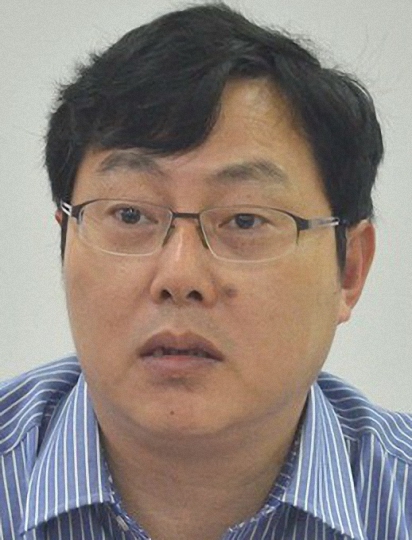For technician, docking in space is a life pursuit
By Cao Chen | China Daily | Updated: 2019-04-08 09:18

Wang Shuqun is the man behind the space docking mechanisms that have successfully completed 13 missions in China's aerospace industry.
The missions include the docking in 2011 of the Shenzhou 8 spacecraft with the Tiangong 1 space lab, which has since fallen out of service, and the docking of China's first cargo spacecraft, Tianzhou 1, with the country's Tiangong 2 space lab.
Wang, 49, a technician at the Shanghai Aerospace Equipment Manufacturing Co, regards the docking mechanisms as his children.
"I'm proud and excited when these systems are used in space. It's like witnessing a child's accomplishments after years of cultivation," said Wang, who received the national-level May 1 Labor Medal last year.
After graduation from a technical school in Shanghai, Wang worked as a fitter in a machinery factory that later became the aerospace manufacturer in Shanghai's Minhang district.
There he met Shan Peilin, a master technician who taught him basic skills such as filing, sawing and drilling, which laid a solid foundation for his research and development of docking systems.
Beyond professional skills, however, Shan guided Wang to make a plan for the future, in both his personal life and career, and to be patient and hardworking.
"That's also what I tell my apprentice now," Wang said.
Shan's guidance helped Wang progress rapidly at work. He won second place in a skills competition at the factory in 1995, and joined the new docking mechanism research team, which was established after China launched its space program in 1992.
The new work stimulated Wang's enthusiasm to put what he had learned into practice. However, docking mechanisms represented a new field, one for which domestic experience provided little reference.
It took nine years for Wang's team to create the first docking mechanism in China, based on a prototype docking model, and seven more years to solve problems and perfect its performance.
"It was a tough period, as I was immersed in the work all day," he said. "I am grateful for my family members, who took care of my child and gave me their understanding and support."
His efforts eventually paid off with the successful docking of Shenzhou 8 with Tiangong 1 space lab in 2011.
China has since become the world's third-largest space power, following Russia in its mastery of the assembly and adjustment of docking mechanisms. It is now preparing for the development of a permanent space station.
"Sixteen years is a long time to undergo hardship and distress. Fortunately, I never gave up," Wang said.
Yang Liwei, China's first astronaut, paid tribute to the work of Wang's team, characterizing it as the thing that "guarantees astronauts' safety during space missions".
Innovation is also part of Wang's career. He developed a cleaning technique that enables nitrogen-driven polymer materials to work under high pressure in an ultrathin pipeline in docking mechanisms.
The innovation won second prize in the National Science and Technology Progress Awards last year.
Now, Wang has his own apprentices whose average age is 38. The team has created more than 50 docking mechanisms, written 15 research papers and gained five patents.
Wang believes more opportunities should be given to young people.
For the development of the lunar rover, Yutu, China's first vehicle to leave a trace on the moon's surface in 2013, Wang selected three skilled people in their 20s as key researchers.
"We're lucky to have Wang, a patient and attentive teacher who is always there when we turn to him for help and encourages us to play core roles in every mission," said Zhao Jie, one of the team members involved with Yutu.
For Wang, the opportunities for younger people is not merely to hone their skills but for developing their interest and love for the job.
"Technical work may be a bit dull and laborious for the new generation, which lives in a diverse world," Wang said. "But it will give them a real sense of achievement and inspire them to further develop their careers as they realize the value of the products they made to a space project for the country."
Currently engaged in future space station development, Wang said the task is filled with challenges, but he takes them as opportunities.
























